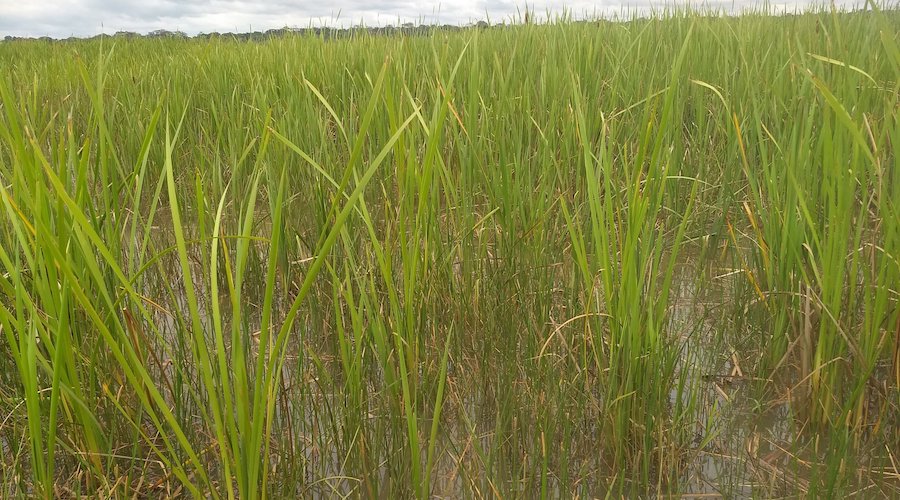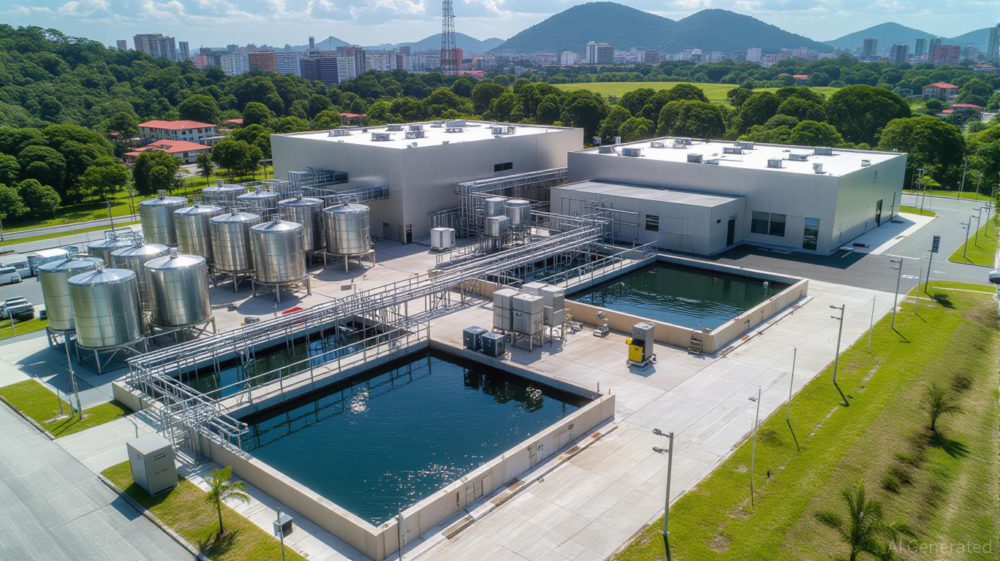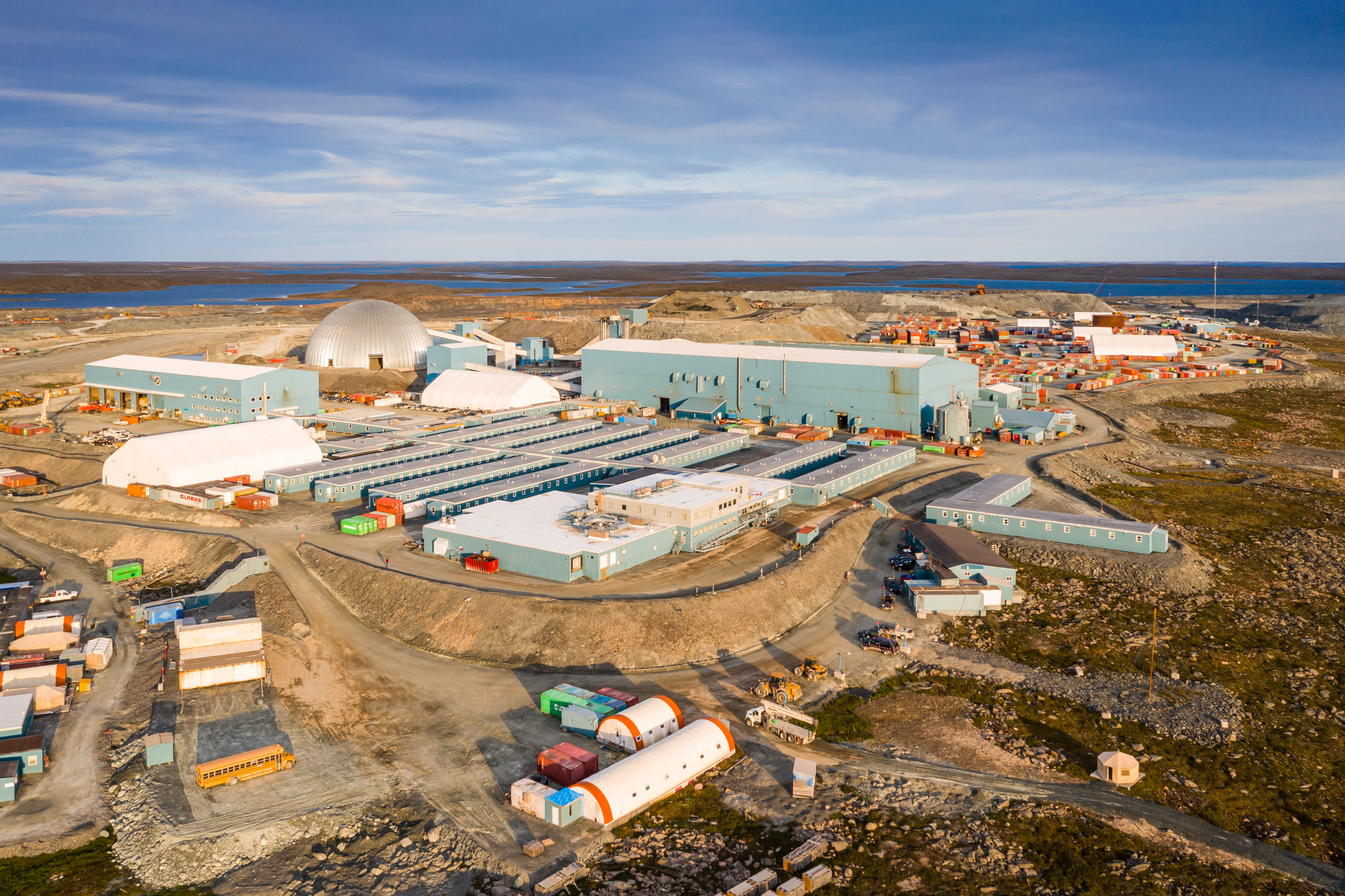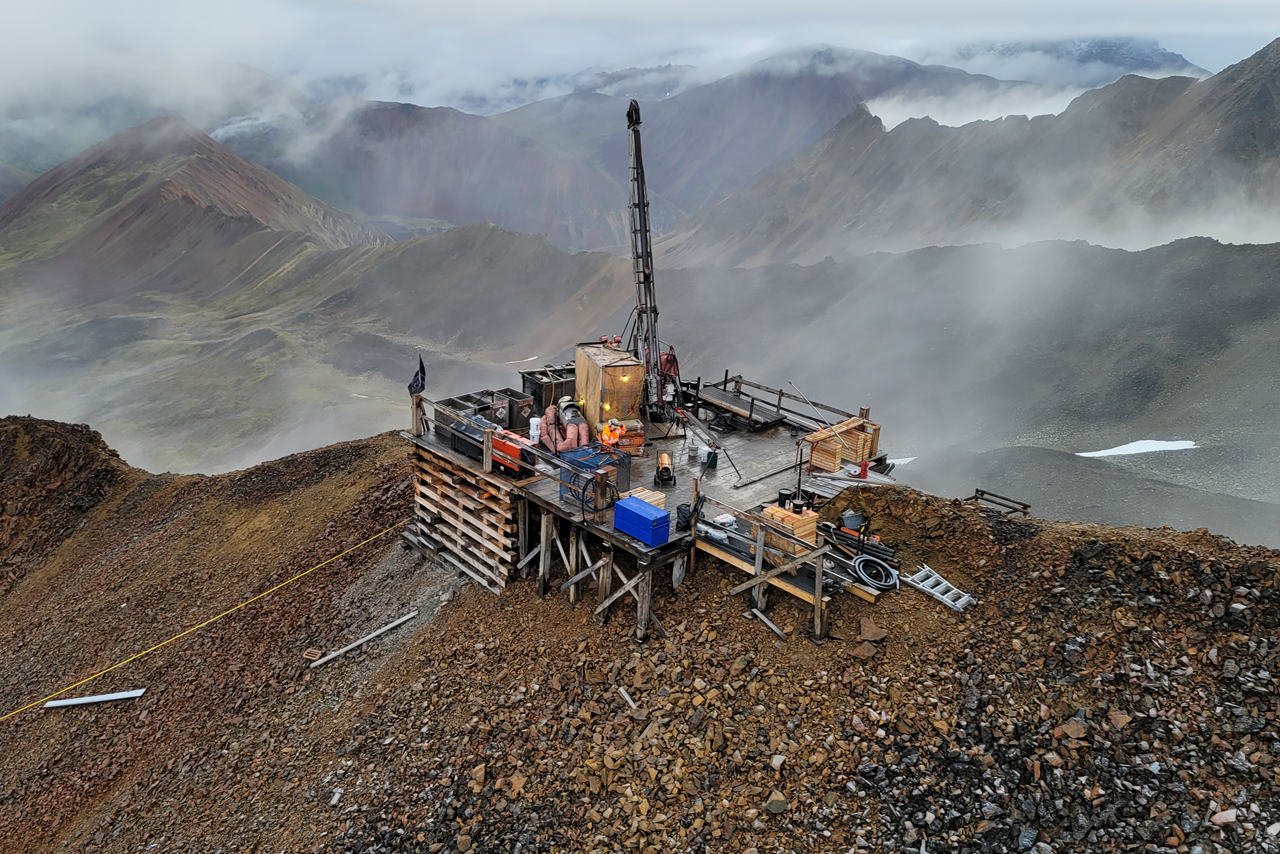Typha domingensis or Southern cattail is a reedy marsh plant that inhabits fresh to slightly brackish waters and is about 2.5 m tall.
The analysis performed by the researchers showed the amount of manganese to correspond to 6,858 milligrams per kilogram (mg/kg) in the plant’s shoots, compared with an average of 200 mg/kg for other species.
The fieldwork was conducted in Regência on the Doce River estuary, Espírito Santo state, an area inundated by part of the 50 million cubic meters of iron mining waste released when the Fundão tailings dam burst in November 2015 in the locality of Mariana, Minas Gerais (a neighbouring state to Espírito Santo), causing the worst environmental disaster in Brazilian history.
The disaster affected 41 towns in Minas Gerais and Espírito Santo, and 19 people died. The toxic waste reached the estuary some two weeks later and is estimated to have contaminated 240.8 hectares of Atlantic Rainforest and killed 14 metric tons of fish. Many projects and programs have been launched since then to try to mitigate the damage, but the estuary is still contaminated.
The study showed that the plants in the estuary extracted 147 metric tons of manganese, or 75.7 tons per hectare (t/ha).
An earlier study conducted in the same area showed that the same plants removed larger amounts of iron from contaminated soil and water than Hibiscus tiliaceus, a 4–10 m tree with yellow flowers often called beach hibiscus.
“We’ve been working on the Doce since 2015 and have achieved a good grasp of the geochemical dynamics of several metals contained in the tailings, such as iron, manganese and other potentially toxic elements,” Tiago Osório Ferreira, senior author of both articles, said in a media statement. “This gives us the opportunity for progress in planning more effective remediation strategies for these contaminated areas. The knowledge built up in these studies will be used not only to rehabilitate degraded areas but also to formulate agromining strategies as a contribution to more sustainable mining.”
Phytoremediation and agromining
Phytoremediation involves the use of plants to extract and remove elemental pollutants or lower their bioavailability in soil. Agromining consists of growing plants capable of storing metals in their roots and leaves in order to extract these metals for industrial use.
“We knew from research by others that manganese is a problem in the region, contaminating the water, soil and fish. When we went to the area affected by iron ore tailings, we expected to find that T. domingensis and Eleocharis acutangula [acute spikerush] accumulated more manganese than H. tiliaceus, a tree species found in the area, but the results showed that T. domingensis can accumulate 13 times more manganese in its aerial parts than the other two species. The process had less impact via root iron plaque [a form of physiological adaptation whereby iron oxide precipitates to form iron plaque on the surface of the plant’s roots],” said Amanda Duim Ferreira, first author of both articles.
According to the latest study, T. domingensis accumulated 18 mg/kg in roots and 55 mg/kg in iron plaque.
Plants adapted to wetland environments capture oxygen from the atmosphere via their aerial parts and transfer it to the roots via porous tissue called aerenchyma. This oxygenation maintains the root system, which is responsible for anchorage as well as the ingestion of water and mineral salts.
Absorption of organic matter by plants favours the dissolution of manganese oxide, and the release of protons can trigger the dissolution of manganese carbonate. On the other hand, aquatic plants can also oxidize their rhizosphere (the zone surrounding plant roots where soil biology and chemistry are influenced by the roots) owing to the internal transport of oxygen to the roots to avoid hypoxia. This process can reduce the bioavailability of manganese.
The measurement
The researchers measured the soil’s physicochemical parameters (rhizosphere pH, bulk soil pH and redox potential) as well as total carbon organic content. They also extracted manganese from the soil under sites naturally vegetated by the three plant species and performed geochemical fractionation of manganese in the soils studied.
Manganese levels were measured in the plants’ roots, aerial portion and iron plaques. Bioconcentration and translocation factors were determined to estimate their capacity to act as hyperaccumulators of manganese and their potential use in phytoremediation programs.
“These discoveries open up a range of possibilities for the use of phytoremediation. Knowledge of absorption mechanisms can be a basis for growing T. domingensis via different strategies to obtain optimal results. We’ve moved on from phytoremediation to agromining as we continue this research,” Osório Ferreira, said.




